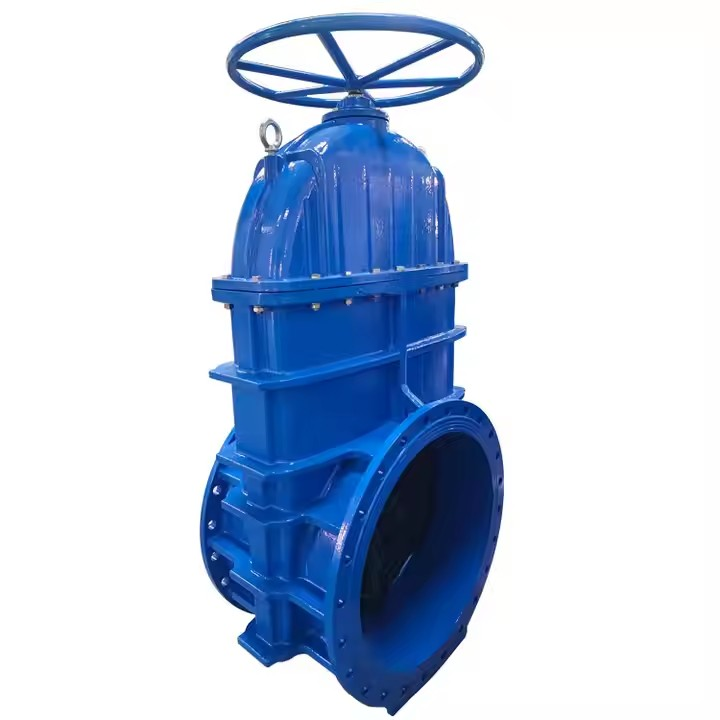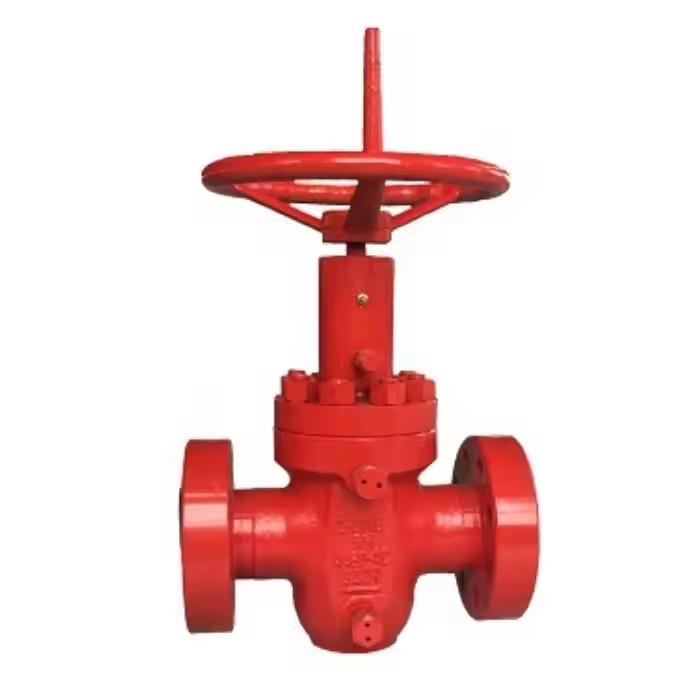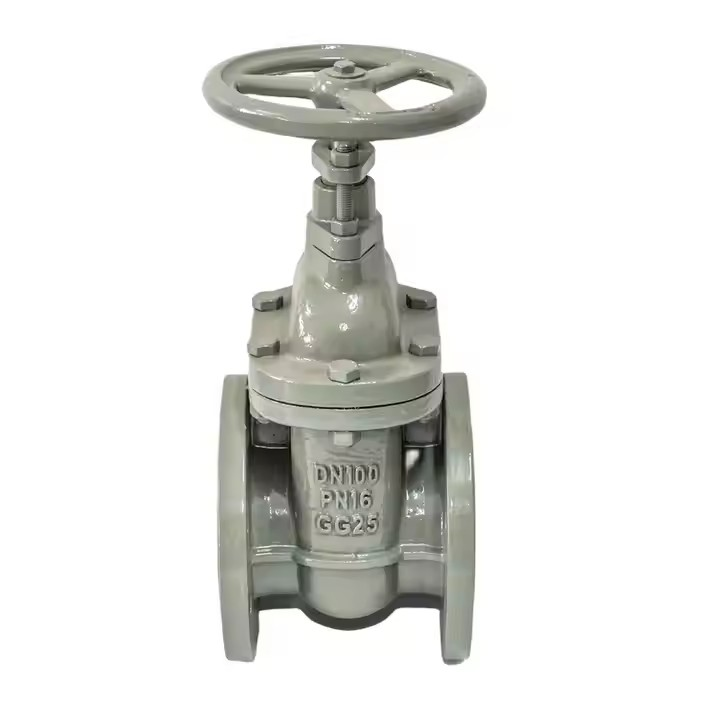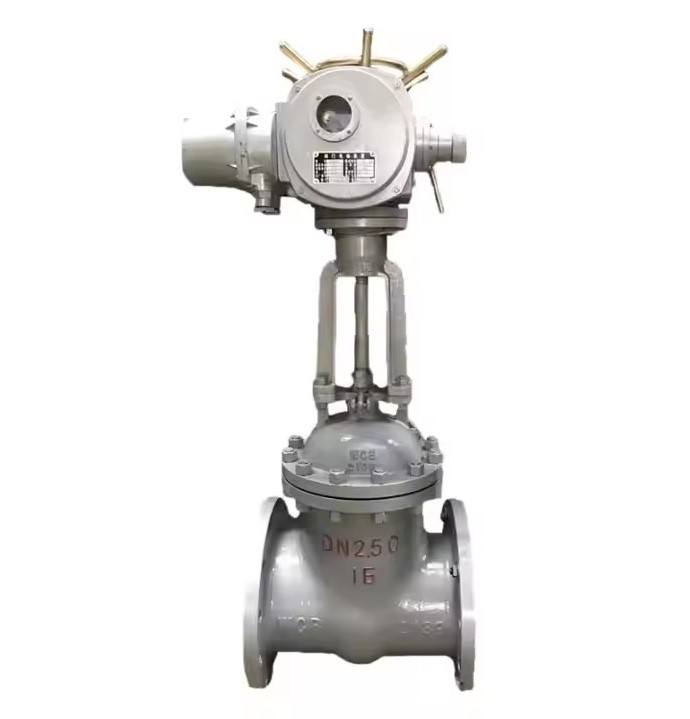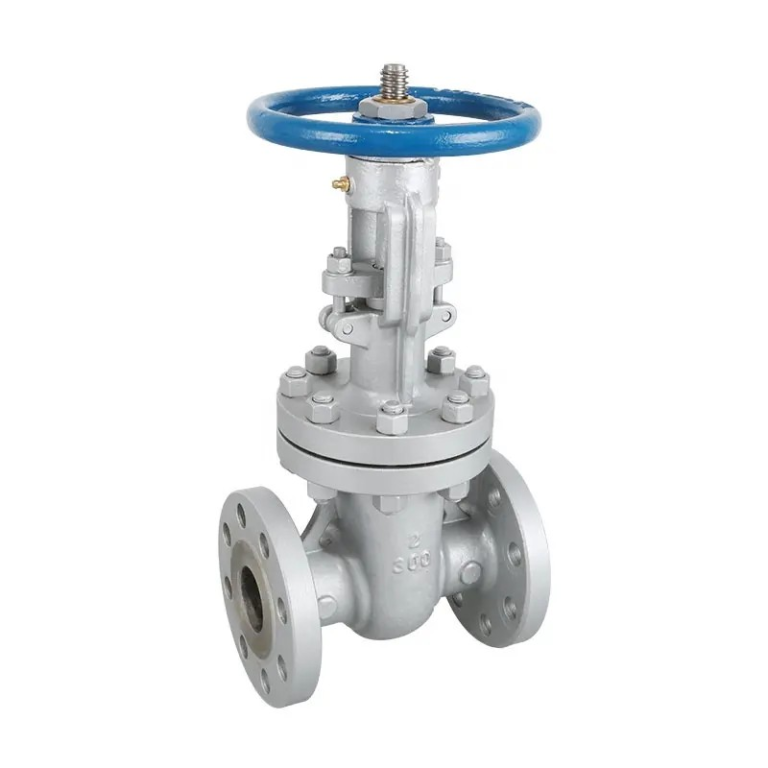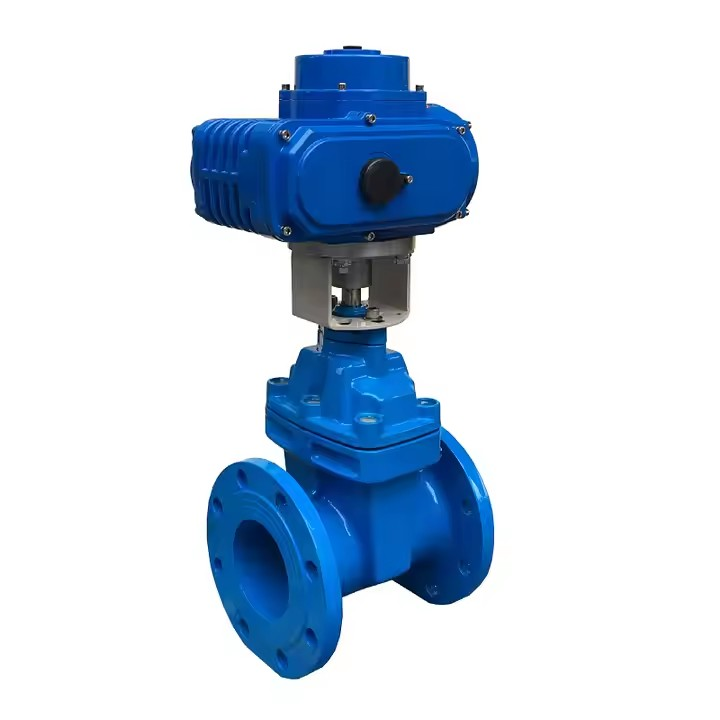Wedge Gate Valve
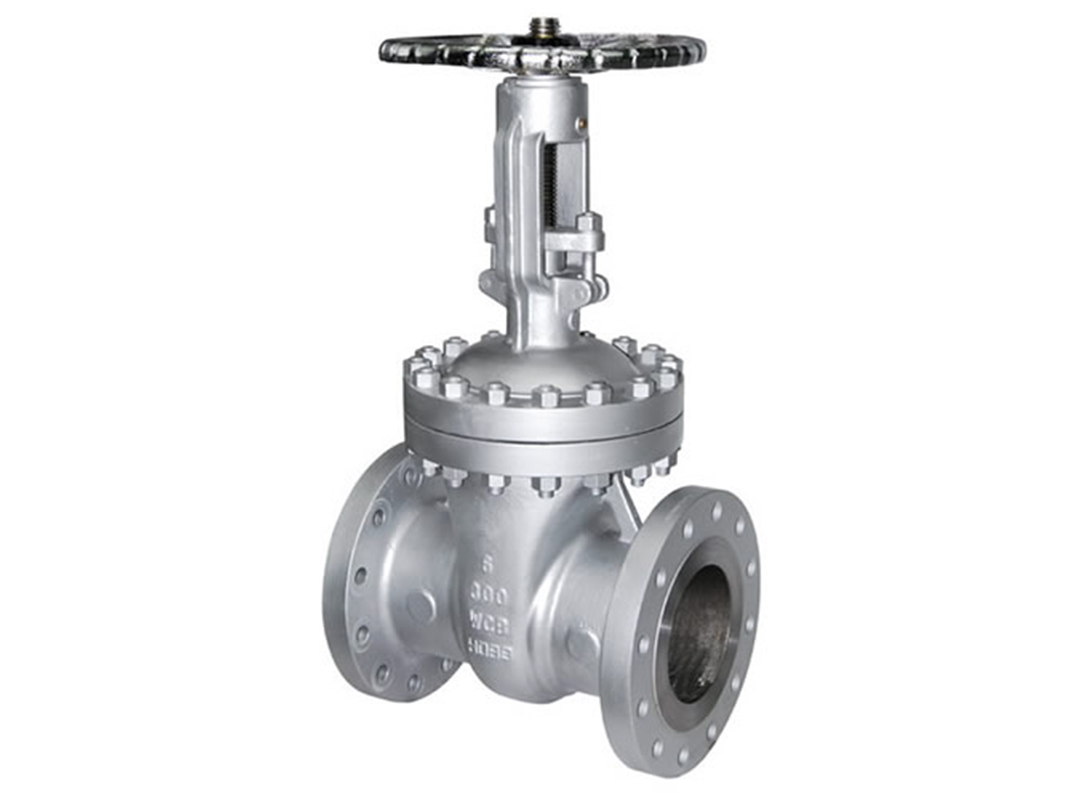
The wedge gate valve gets its name because its sealing surfaces form a certain angle with the vertical center line, that is, the two sealing surfaces are in a wedge shape. Generally speaking, the angles between the sealing surfaces and the vertical center line are 2°52’, 3°30’, 5°, 8° or 10°, etc. The wedge gate valve can be further divided into rising stem gate valves and non-rising stem gate valves, as well as single-disc wedge gate valves and double-disc wedge gate valves. The driving methods include electric, pneumatic, manual, pneumatic-hydraulic, etc., and the connection methods include flange type, welding type and wafer type.
The disc of the wedge gate valve can be made into a whole, which is called a rigid disc and the valve is called the solid wedge gate valve; it can also be made into a disc that can produce a slight deformation and make up for the deviation of the sealing surface angle generated during the machining process. This kind of disc is called an elastic disc, and the valve is called the flexible wedge gate valve.
Main features of the wedge gate valve.
- The wedge gate valve adopts wedge type gate, because the Angle of the gate is wedge type with the vertical center line, it can be closed more and more tightly in the closing process, further ensuring the sealing effect;
- It adopts a rising stem, which can visually see the opening or closing state of the valve from a distance and is easier to judge. The stem and gate are connected by t-groove, and the t-head of the stem is forged as a whole to ensure sufficient connection strength;
- It is with a sealed design that allows replacement of the packing when fully open. This design ensures that the packing can be replaced online when it needs to be replaced if the packing is damaged, preventing labor waste caused by disassembly of the valve;
- It is designed with the anti-collision protection on the flange surface, which can protect the convex surface connected with the pipe flange during transportation and prevent damage of the valve in collision.
Main Part Material
| No | Part | Material |
| 1 | Body | ASTM A216 WCB |
| 2 | Seat Ring | ASTM A105 + 13Cr |
| 3 | Wedge | ASTM A216 WCB + 13Cr |
| 4 | Stem | ASTM A276 410 |
| 5 | Bonnet Gasket | Graphite + SS304 |
| 6 | Bonnet Bolt | ASTM A193 B7 |
| 7 | Bonnet Nut | ASTM A194 2H |
| 8 | Bonnet | ASTM A216 WCB |
| 9 | Backseat | ASTM A182 F6a |
| 10 | Stem Packing | Reinforced Graphite |
| 11 | Handwheel | KTH330-08 |
Licence & Approvals
| CERTIFICATE NAME | INSTITUTION |
| API 600-0351 | American Petroleum Institute |
| API 6D-1225 | American Petroleum Institute |
| ISO 9001:2015 | TQCS INTERNATIONAL (GROUP) PTY LTD\ |
| ISO 14001:2015 | TQCS INTERNATIONAL (GROUP) PTY LTD\ |
| ISO 45001:2018 | TQCS INTERNATIONAL (GROUP) PTY LTD\ |
| Fire Test Certificate API 6FA | TUV SUD SERVICE GMBH |
| CE-2810 | PRESSURE EQUIPMENT DIRECTIVE 2014/68/EU |
The data is for reference only, please consult sales@wayvalve.com for details.
Applications of wedge gate valves.
Suitable for general application as on/off and isolation valves, not recommended for throttling and/or regulating purposes. They have excellent resistance to earthquake, shocks, vibration, pressure & strokes and can be operated soundly between -196°C to 595°C.

What is the difference between a wedge gate valve and a seated gate valve?
The main differences between a wedge gate valve and a seated gate valve are as follows:
Structure: A wedge gate valve has a wedge-shaped disc that moves up and down to open and close the valve. The seat is usually on the valve body. In contrast, a seated gate valve has a disc that fits into a seat ring, and the seat ring is often removable and can be replaced if worn.
Sealing performance: Wedge gate valves rely on the wedge-shaped disc to create a seal against the valve body seats. They can provide a good seal, but may be more affected by thermal expansion and contraction. Seated gate valves, with their dedicated seat rings, often offer better sealing accuracy and are more suitable for applications requiring tight shut-off, as the seat ring can be precisely machined and maintained.
Application scenarios: Wedge gate valves are commonly used in general fluid-handling systems, such as water supply and drainage, and some low-pressure steam systems. Seated gate valves are often preferred in high-pressure, high-temperature, and high-purity fluid systems, such as in the petroleum, chemical, and power industries, where reliable sealing and long-term performance are crucial.
INQUIRY

